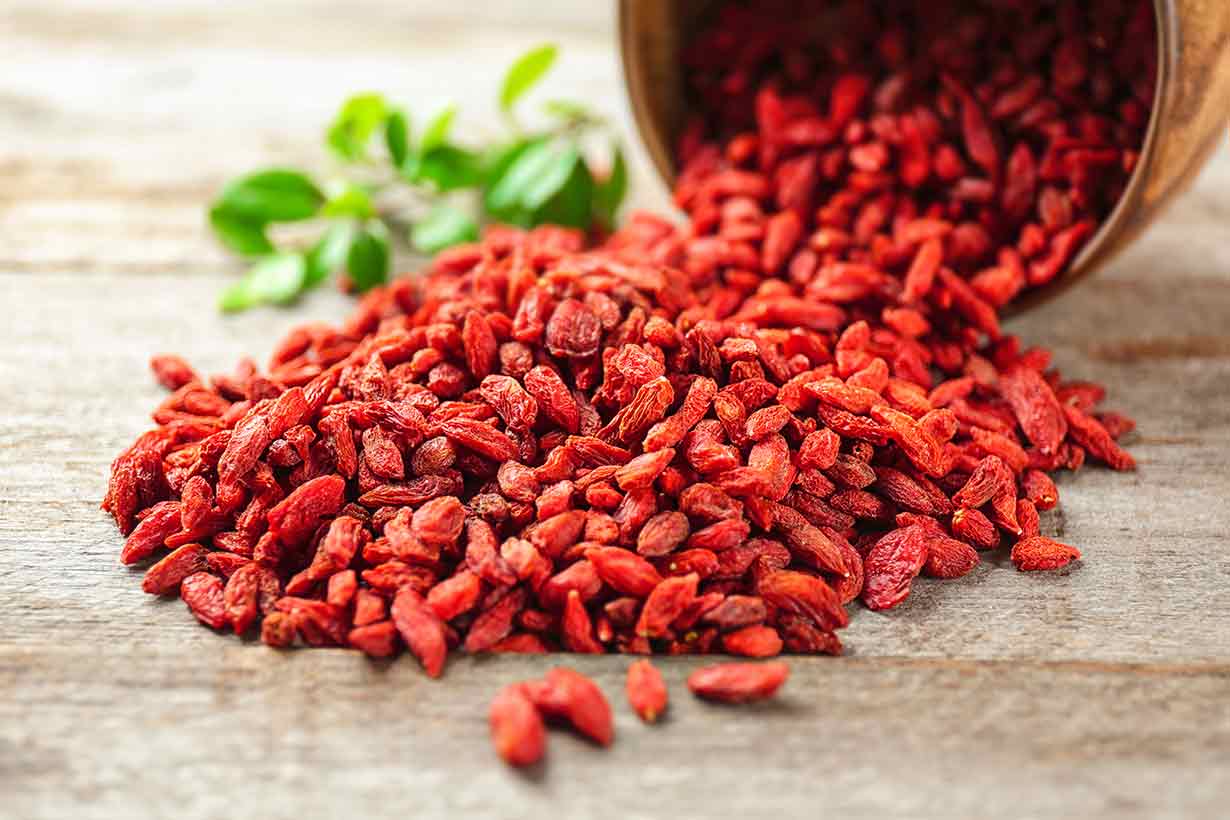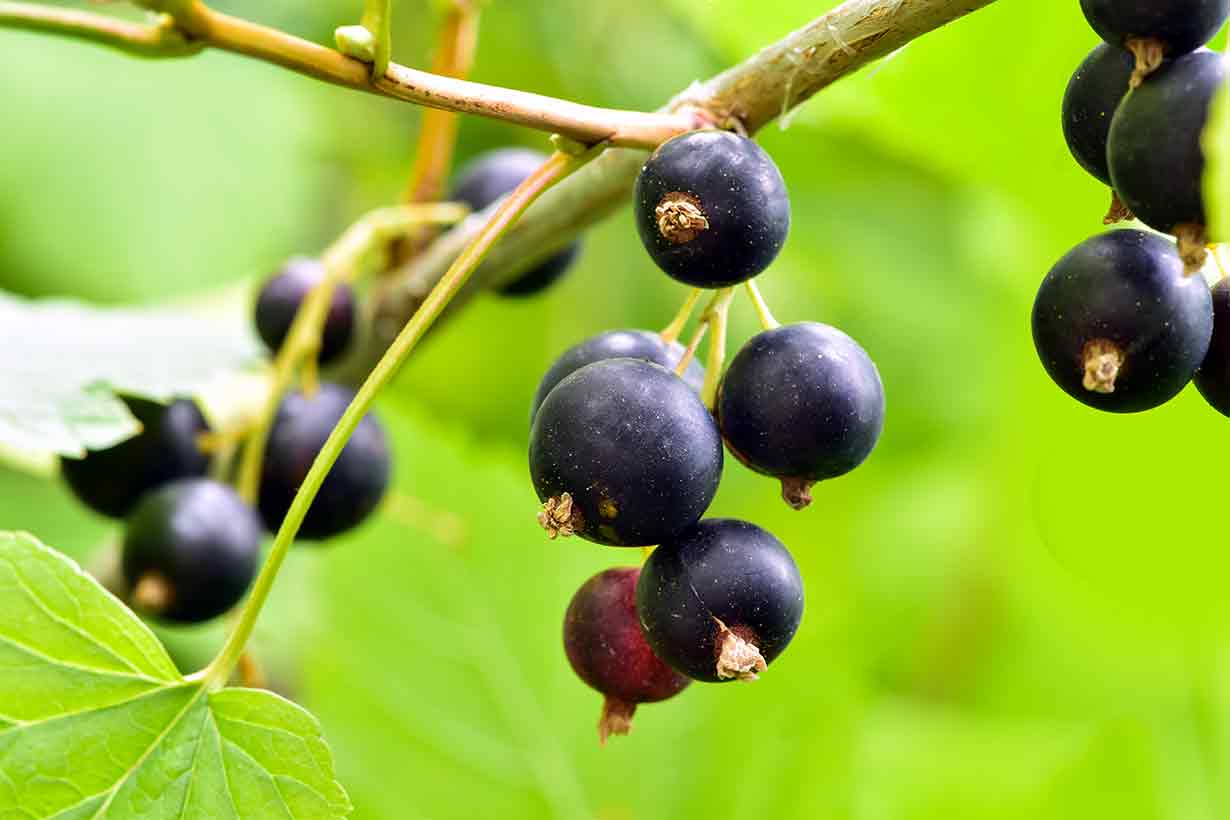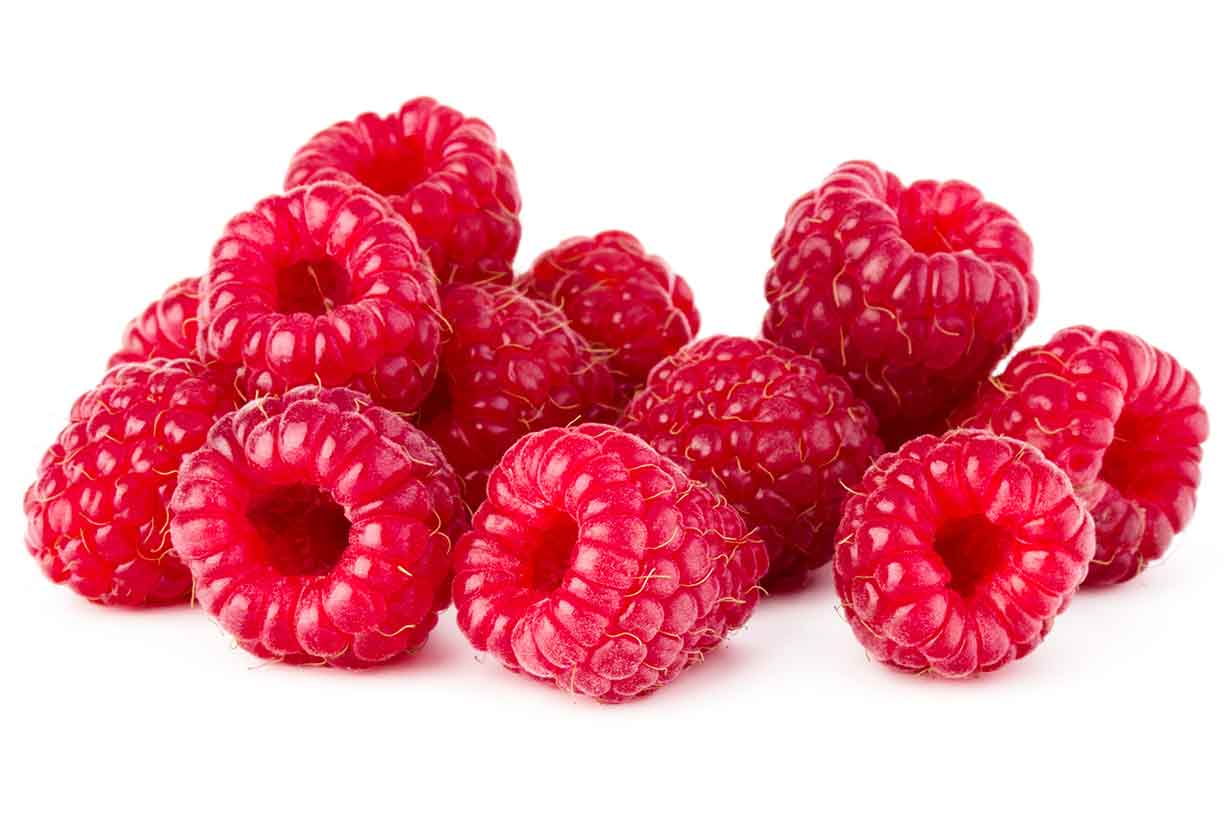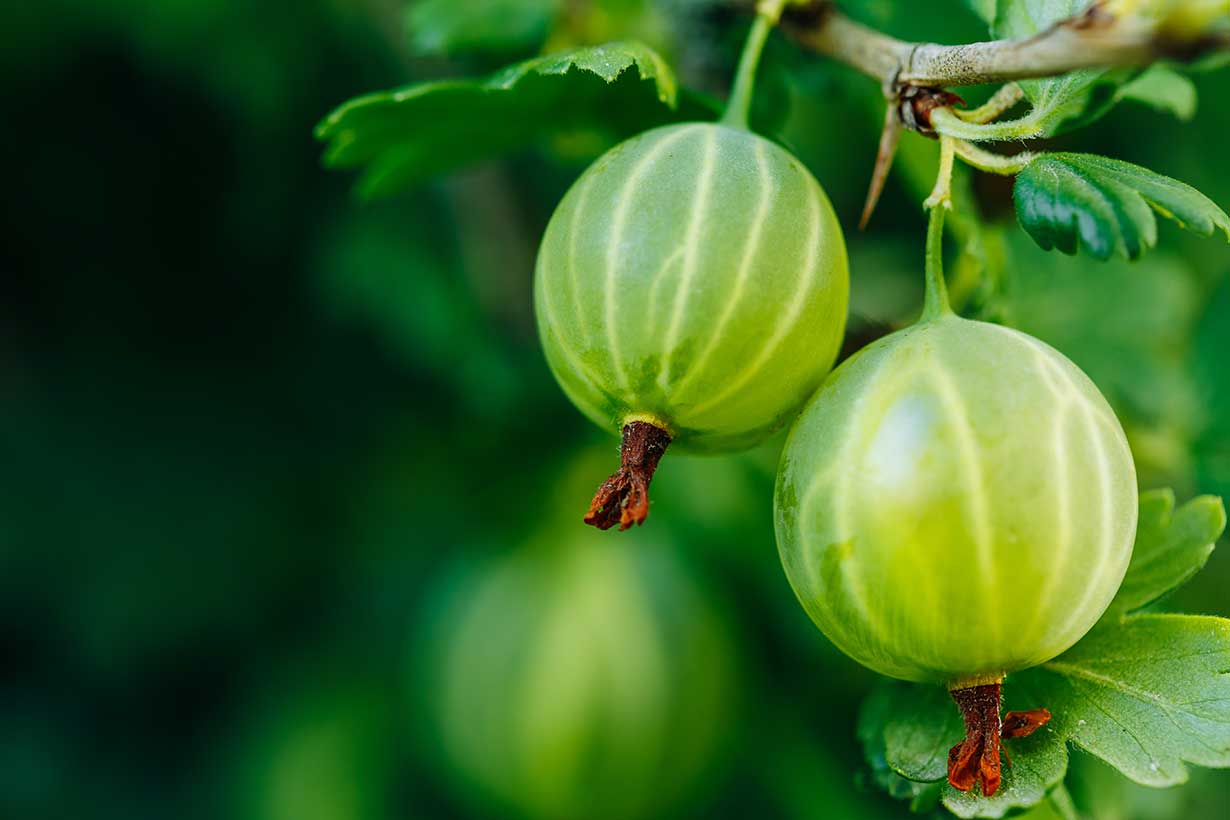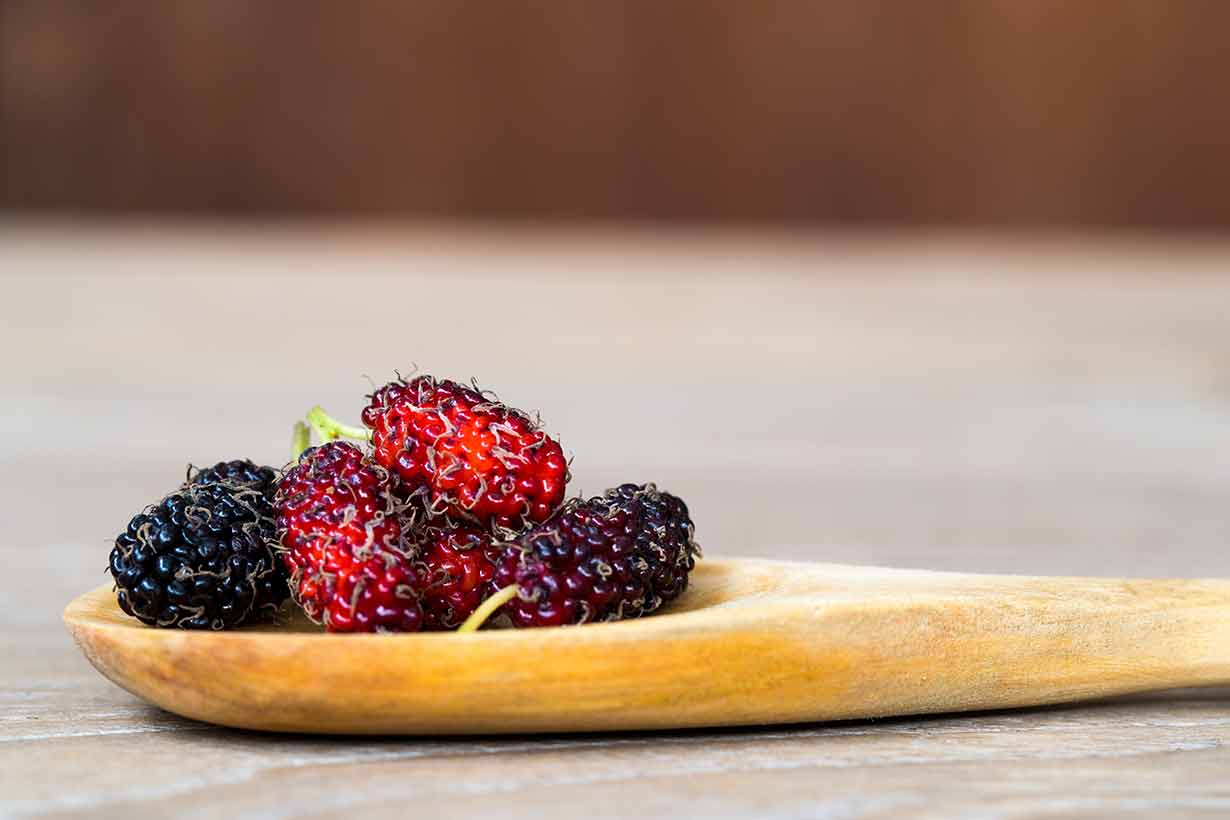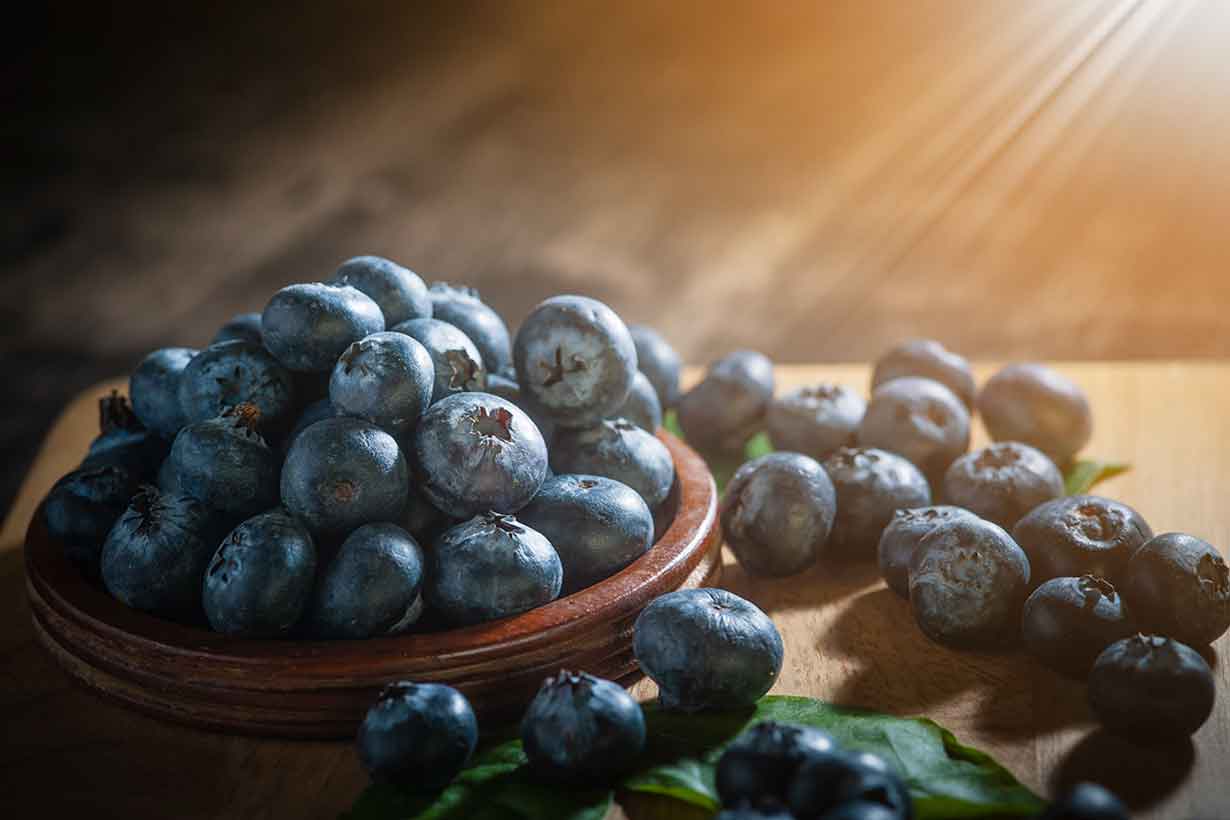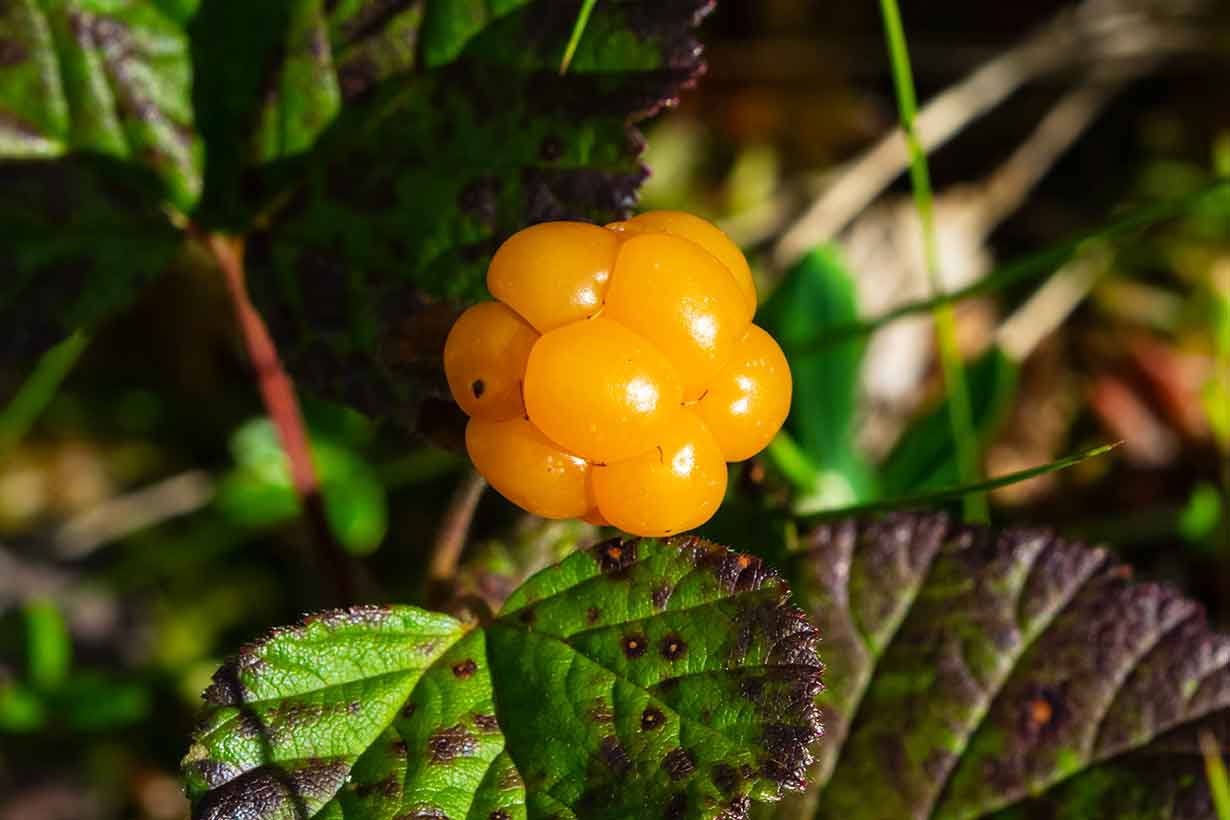There is no such thing as a “superfood,” but cranberries are a fruit that often receives this accolade.
But do they deserve it?
In truth, cranberries have some interesting benefits, but people often exaggerate their health properties.
This article takes a look at the potential health benefits (and some concerns) of cranberries alongside their full nutrition profile.
What Are Cranberries?
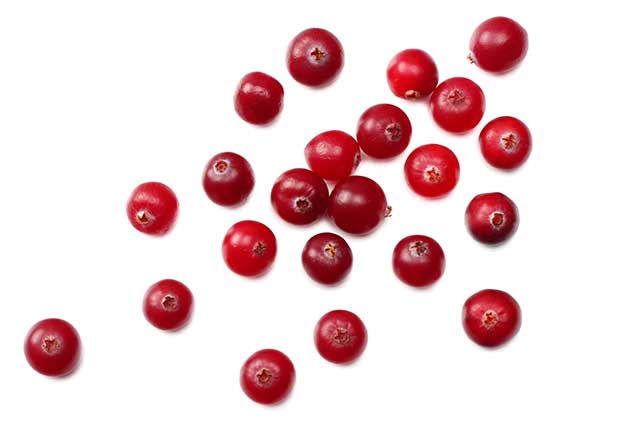
Cranberries are small red berries with a tart taste that dominates the slight natural sweetness of the fruit.
There are two main types of cranberry fruit, one of which grows in the Americas (Vaccinium oxycoccos) and one which is native to Europe (Vaccinium macrocarpon).
Historical records show mention of these colorful red berries since the mid-16th century, so they have been part of the human diet for centuries.
Despite their tart taste, cranberries are one of the most popular fruits in the world.
Although it is possible to eat the berries raw, only about 5% of cranberries are sold in their fresh state (1).
In other words, they are a popular variety of dried fruit.
However, a wide range of cranberry products also exists. These products include everything from cranberry juice and jam to dried cranberries.
Health Benefits of Cranberries
Here is a look at some of the potential health benefits of cranberries according to their nutrient profile and scientific studies.
1) Cranberries Are a Good Source of Vitamin C
The primary micronutrient that cranberries offer is vitamin C.
Per 100 gram serving, cranberries provide 13.3 mg of vitamin C, which is equal to 22% of the reference daily intake (RDI) (2).
Vitamin C is a nutrient that works as an antioxidant in the body, and it can help to protect human cells and tissues from oxidative stress (3, 4).
However, if you are looking for vitamin C, other berries such as raspberries and cloudberries offer much higher concentrations.
2) Do Cranberry Extracts Help To Prevent Urinary Tract Infections?
There is some evidence that certain polyphenols contained in cranberries may help to reduce the risk of urinary tract infections (UTIs).
However, this topic is where you can find many exaggerated claims online.
Firstly, some systematic reviews and meta-analyses of randomized controlled trials support the assertion that “cranberry products” can reduce UTI incidence (5, 6).
However, the researchers stress that higher quality studies are necessary, and many of the existing studies were designed and funded by Ocean Spray (who make various cranberry products).
The idea that cranberries help to protect against UTIs comes from a specific polyphenol class they contain called A-type proanthocyanidins (PAC-A).
According to research, these compounds can prevent E. coli from attaching to bladder cell receptors, thereby inhibiting an infection from taking hold (7).
Actual Cranberries vs. High Strength Extracts
However, the idea that simply eating cranberries (or cranberry juice) prevents UTIs may be exaggerated.
For example, a trusted Cochrane systematic review of the evidence found that cranberry juice is “less effective than previously indicated” at preventing UTIs (8).
Recently, a pre-clinical controlled trial demonstrated that twice-daily intake of high PAC-A cranberry extract was effective at preventing UTIs (9).
However, high-dose extracts designed for clinical purposes and simply eating cranberries (or drinking cranberry juice) are very different things.
3) Cranberries Are a Good Source of Fiber
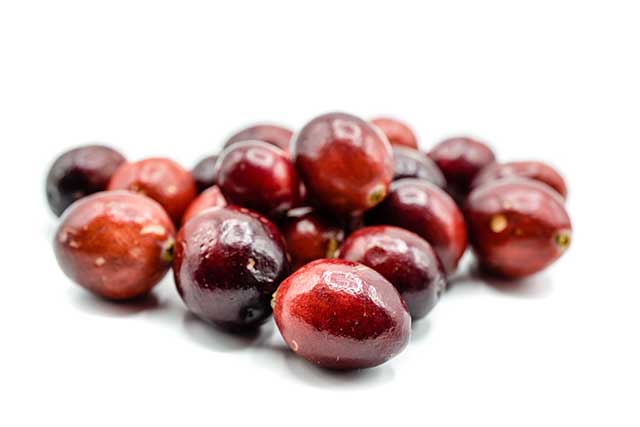
Cranberries contain 12.2 grams of dietary carbohydrate, of which 4.6 grams are fiber (2).
Fiber has the beneficial effect of attenuating postprandial (after eating) blood glucose spikes in carbohydrate-containing foods (10).
Additionally, although research on the microbiome is in its early stages, some studies suggest that certain types of fiber may improve gut health.
In a systematic review of 64 studies and featuring 2099 participants, higher fiber intake increased the presence of “good” gut bacteria and lowered “bad” bacteria (11).
The fiber content of cranberries also makes them reasonably suitable for individuals following lower carb diets.
With 4.6 grams of fiber, cranberries contain 7.8 grams of “net carbs” per 100 grams.
4) Cranberry Supplementation May Lower Blood Pressure (But the Evidence Is Unclear)
Some research suggests that cranberry consumption may have a positive effect on blood pressure.
In one study featuring 56 participants, eight weeks of daily cranberry juice consumption led to slightly lower diastolic blood pressure (12).
A further randomized, controlled trial found that daily consumption of cranberry juice over four months led to a significant reduction in systolic blood pressure (13).
However, another randomized controlled trial showed that cranberry juice had no significant effect on blood pressure (14).
In short; the evidence for blood-pressure-lowering claims is somewhat mixed.
While it is possible that cranberries may have a slight effect on blood pressure, more extensive research is necessary to support this claim.
5) Cranberries May Help To Inhibit LDL Oxidation
Low-density lipoprotein (more commonly referred to as LDL-cholesterol) is associated with increased cardiovascular risk (15).
However, this topic requires nuance, and several different markers of cardiovascular health (such as the triglycerides to HDL ratio and Apo B) could be more accurate markers of risk (16, 17).
One thing that most researchers agree on though is that oxidized LDL (ox-LDL) is a serious risk factor for cardiovascular disease.
In this regard, research shows that oxidized LDL plays a significant role in the development of atherosclerosis (arterial plaque formation) (18).
Studies on Cranberries and Oxidized-LDL
Several studies suggest that daily cranberry juice supplementation increases plasma antioxidants and lowers concentrations of circulating oxidized LDL (19, 20, 21).
The results of these studies were also statistically significant.
Furthermore, a review of the evidence noted that cranberry products demonstrate anti-inflammatory properties in intervention studies (22).
Summary of Evidence
Here is a quick overview of the level of evidence behind some of the specific health claims about cranberries.
| Health Benefit Claim | Evidence |
|---|---|
| Cranberries Are a Good Source of Vitamin C | True – 22 % of the RDI per 100 g. |
| Cranberry products prevent UTIs | Weak evidence from small, industry-designed studies. |
| Cranberries are rich in fiber | 4.6 grams of fiber per 100 g. |
| May lower blood pressure | Mixed and inconclusive. |
| May inhibit LDL oxidation | Numerous small studies support this claim. |
Concerns
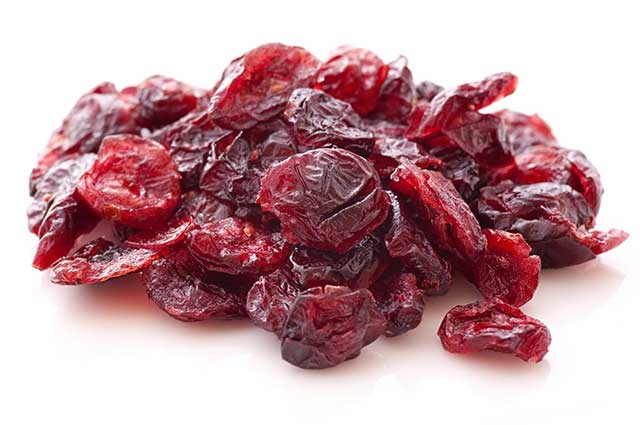
In addition to their potential benefits, there are also some concerns about cranberry consumption.
Here is a look at how cranberries could be problematic.
1) Cranberry Products Contain Significant Amounts of Added Sugar
As previously mentioned, around 95% of cranberries are used to make cranberry products, with only 5% consumed in their fresh state (1).
The problem here is that cranberry products such as jam, juice, and sweetened dried berries contain substantial amounts of sugar.
For example, the table below shows how one ounce (28 grams) of fresh cranberries compares to the same amount of dried, sweetened berries (2, 23).
| Nutrient | Raw Cranberries | Dried Sweetened Cranberries |
|---|---|---|
| Calories | 12.9 kcal | 86.2 kcal |
| Carbohydrate | 3.4 g | 23.1 g |
| Fiber | 1.3 g | 1.6 g |
| Sugars | 1.1 g | 18.2 g |
As shown, dried cranberries contain large amounts of sugar.
There are similar high amounts of sugar in the juice and jam of the berry too.
For instance, cranberry juice contains more sugar than Coca Cola, and cranberry jam offers around 10 grams of sugar per ounce (28 grams) (24, 25).
While they can be quite tart-tasting, raw cranberries are much healthier than their processed forms.
Opting for fresh or frozen options is preferable.
2) Cranberries Are High In Oxalates
A second potential issue with cranberries is that they are high in oxalic acid.
Oxalic acid (often referred to as oxalate) is a natural compound found in numerous plant foods.
However, excessive intake of oxalates can potentially lead to the formation of kidney stones and renal inflammation (26, 27).
Studies show that concentrated cranberry products like cranberry juice and tablets can increase urinary oxalate secretion.
Therefore, researchers say they may increase the risk of stone formation for those who have a higher risk of developing kidney stones (28, 29, 30).
Nutrition Facts
For reference purposes, here is the full nutrition profile for fresh cranberries per 100-gram serving (2).
Calories and Macronutrients
As shown in the table below, fresh cranberries are reasonably low in calories. They are predominantly a source of carbohydrate, and they contain a good amount of fiber.
| Calories/Nutrient | Amount (kcal/grams) |
|---|---|
| Calories | 46.0 kcal |
| Carbohydrate | 12.2 g |
| Fiber | 4.6 g |
| Sugars | 4.0 g |
| Fat | 0.1 g |
| Saturated Fat | 0.0 g |
| Monounsaturated Fat | 0.0 g |
| Polyunsaturated Fat | 0.1 g |
| Omega-3 | 22.0 mg |
| Omega-6 | 33.0 mg |
| Protein | 0.4 g |
Vitamins
Here you can see the vitamin content of cranberries in descending order.
| Vitamin | Amount | % RDI |
|---|---|---|
| Vitamin C | 13.3 mg | 22 % |
| Vitamin K1 | 5.1 mcg | 6 % |
| Vitamin E | 1.2 mg | 6 % |
| Vitamin B6 | 0.3 mg | 3 % |
| Vitamin B5 | 0.3 mg | 3 % |
| Vitamin A | 60.0 IU | 1 % |
| Vitamin B1 | Trace | 1 % |
| Vitamin B2 | Trace | 1 % |
| Vitamin B3 | 0.1 mg | 1 % |
| Folate | 1.0 mcg | 0 % |
Minerals
As shown in the table below, cranberries are a good source of the mineral manganese.
However, they are very low in other minerals.
| Mineral | Amount | % RDI |
|---|---|---|
| Manganese | 0.4 mg | 18 % |
| Copper | 0.1 mg | 3 % |
| Potassium | 85.0 mg | 2 % |
| Phosphorus | 13.0 mg | 1 % |
| Calcium | 8.0 mg | 1 % |
| Magnesium | 6.0 mg | 1 % |
| Iron | 0.3 mg | 1 % |
| Zinc | 0.1 mg | 1 % |
| Sodium | 2.0 mg | 0% |
| Selenium | 0.1 mcg | 0 % |
Final Thoughts
There are many reasons to like cranberries; they’re a good source of vitamin C, fiber, and potentially health-promoting polyphenols.
However, many health claims about these berries also exaggerate their potential benefits.
For instance, there is not a lot of high-level evidence to support their UTI preventive properties.
Also, while regular fresh cranberries are fairly nutritious, it is worth remembering that many cranberry products are full of sugar.
That said, cranberries can be a good addition to a healthy diet, but the best reason to eat them is that you enjoy their taste.
For more on berries, see this article on the nutrition benefits of blackberries.


